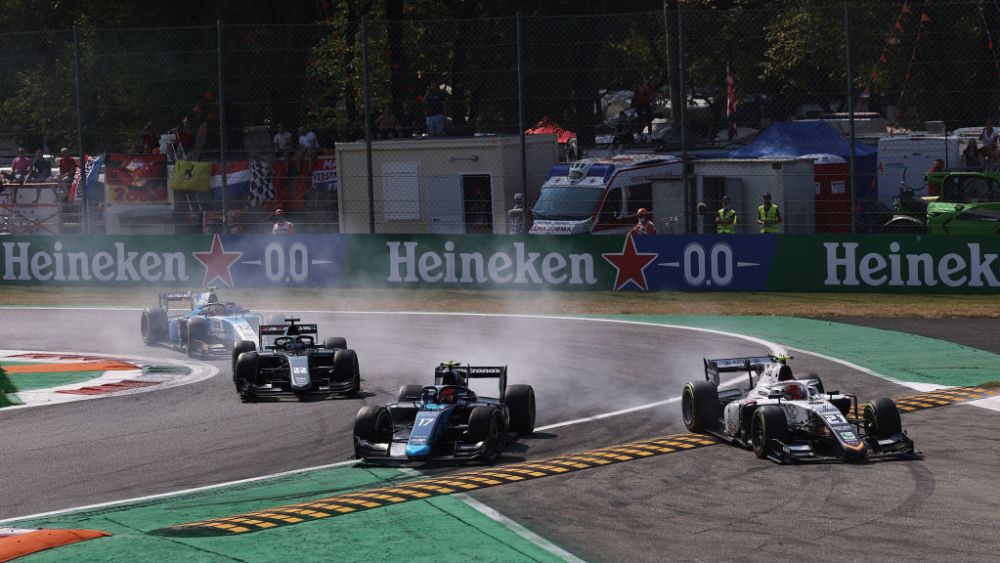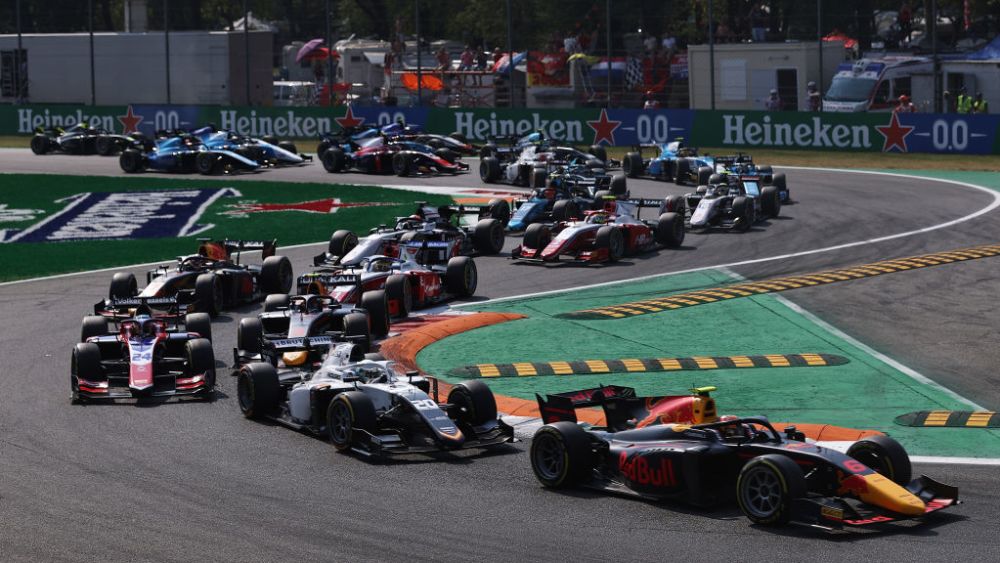Feature
‘You have no brakes for the first 30 to 40 metres’ - Why Monza’s Turn 1 is so tricky

It’s a familiar sight whenever we race at Monza: a driver locks up on entry at the first turn and completely misses the corner, instead, heading down the escape road and losing significant ground, and usually a position or two, in the process.
David Beckmann dropped from second to fourth in the opening Sprint Race after going down the escape road, while hurting his tyres in the process. Jüri Vips did the same thing shortly after, while Théo Pourchaire, and Beckmann again, were both forced to use it in the second Sprint, losing valuable time and pace.
It’s not the first time either. The likes of Nyck de Vries and Callum Ilott have both famously had to divert down the road in previous years. There’s an extremely fine line between success and failure.
But why does it happen so regularly at the Italian track? We grabbed Monza specialist Marcus Armstrong to find out…
READ MORE: ‘Let’s talk after Sochi’- Shwartzman confident he can go up a level from Monza

“We have low downforce (at Monza) so you don’t have as much as grip as you normally would at a different track because of the long straights,” said Armstrong. “You arrive at the corner with colder brakes and colder tyres than you usually would for all of the other braking zones on the track.
“We also have carbon brakes, carbon disks, which gain and lose temperature very quickly, so when you are going down the straight at 350kph, your brakes lose so much temperature. So, when you hit them, you have no grip, and you basically have no brakes for the first 30 to 40 metres.
“Then when your brakes suddenly arrive, if you don't have the tyre temperature or the tyre grip to match the braking force that you are putting on the pedal, you're just going to lock.”
After a frustrating Qualifying session, where he finished 19th, Armstrong embarked on charges through the field in both the first Sprint Race and the Feature Race.

It required him to take several risks on his way through the pack and the DAMS driver explained that the desire to push the limits is another contributing factor. Whether you are fighting for first or 21st, every millisecond, and even millimetre, counts.
The main straight at the aptly nicknamed ‘Temple of Speed’ is the second-longest on the Formula 2 calendar at 1120m, and if you’re arriving in the middle of a full-throttle, wheel-to-wheel battle, adrenaline is likely to play a part. So, if you think you can wait that bit longer before braking, safe in the knowledge you haven’t got a barrier to hit, you may just take your chance.
“It’s predominantly down to the long straight, the low downforce and the low tyre temperature - the cold surface temp on the tyre,” he continued. “A lot of people have done it this week. I haven't done it, but you can take a risk on the braking point that you probably wouldn't at another track. You know that you have a run-off area, so I guess people are doing that as well.”
But with so many making the mistake through the years, how can it be prevented? As one of the drivers not to make the gaffe over the weekend, Armstrong was able to share a few pointers.
READ MORE: Round 5 Bruno’s Debrief: We saw three amazing races in the temple of speed

“You need to make sure that you don't exaggerate,” he said. “These tyres are very on and off, you never quite know what you have underneath you until you arrive.
“Obviously in Quali, you don't want to leave a margin, but certainly when you are in a pack full of people and you have a loss of downforce due to following other cars, you always want to take a bit of a margin.
“If you have the wrong brake balance for example, or if you make a small mistake, then you’re going to take everyone out and that's predominantly due to what I mentioned before.”